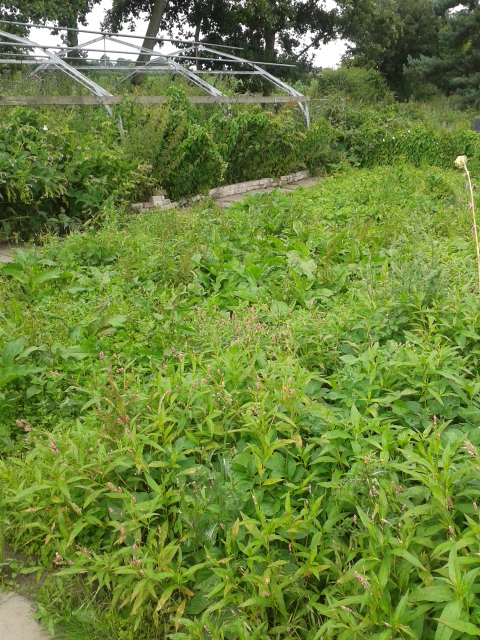Coastal shell middens (rubbish
tips), are a significant feature of the Mesolithic (11,500–6000 cal BP)
archaeological record of western Scotland, the amount of shellfish and fish
remains found in them suggests a maritime lifestyle based on fishing and shellfish.
Yet despite evidence for the importance of fish and shellfish to diet,
virtually nothing is known as to how they were caught or collected.
My research attempted to change
this by using a combination of bushcraft/primitive skills and experimental
archaeology.
Experimental archaeology has been
used by researchers in Scottish Mesolithic contexts before, but has mainly
concentrated on process and function trials. Examples include; using
bevel-ended tools in an attempt to provide possibilities of use, harpoon
construction, reconstruction and use of antler mattocks, experimental knapping,
food processing and preservation, hazelnut roasting, and cooking trials with
meat and shellfish.
Initially, my work focussed on the prehistoric
environments of Scottish West Coast Mesolithic coastal sites, to establish what
natural resources were available to Mesolithic coastal dwellers. I then looked
at a range of archaeological/traditional fishing gear and food collection strategies
to see what might have been used in the Mesolithic. These perspectives,
together with the prehistoric environmental data, guided my construction and
use of the fishing gear, which used only the resources and technologies
available to the Mesolithic hunter-gatherers of West Coast Scotland.
 |
| Gorge hooks made of Roe Deer metapodial with line made from willow bark. |
My fieldwork and experiments were
conducted at the Mesolithic coastal sites of; Ulva, Oban, Oronsay and Sand,
together with South Uist and the Urr estuary on the Solway Firth.
The fishing gear that I built and
used, using primitive technology and ‘bushcraft’ skills, reflected the current
debates as to Mesolithic fishing strategies, as such, several archaeological theories
were tested. The fishing gear also attempted to target the main fish and crab
species found in the middens; coalfish, pollack, wrasse, green shore crab,
harbour crab and edible crab.
I spent much of the time scrubbing
around on remote Scottish islands, testing whatever I could find to see if I
could make fishing lines, hooks or basket traps. This involved travelling to
some of the most beautiful parts of Scotland and sitting on the coast fishing
with my hand made gear.
 |
| This fish trap was made with the natural re-growth of alder and willow and was, as were the gorge hooks above, made with nothing but stone and bone tools. |
I made and tested a wide range of
fishing gear and travelled thousands of miles over 4 years and started to feel
like a Mesolithic hunter-gatherer; lugging
fishing gear around the west coast of Scotland to remote sites, planning to
maximise the use of tides, the health and safety when working alone in remote
locations, the lousy weather that plagued my 2011 fieldwork. These experiences
provided me with an insight into the world of the Mesolithic coastal hunter-gatherer,
revealing the extent of logistical organisation and knowledge that
hunter-gatherers must have had in order to fully utilise their environment. The
planning needed to maximise returns, whether foraging, hunting or collecting resources.
The knowledge required of the environment; the places to find the best
materials for a particular task, knowledge of seasons and the seasonal movement
of species, when and where to be at a particular place at a particular time. My
experiments demonstrated how site-specific fishing technologies could have been
created using naturally occurring local materials to catch fish, and how knowledge
of tides was essential in the day to day gathering of food.
Another key part of my experiments
was the involvement of students. I taught them the primitive skills and ancient
technologies required to make their own basic fishing gear, then took them
fishing.
All this experimental work can only
benefit archaeologists if it is evaluated. Aspects of collection, manufacture,
fishing, evidence of learning and understanding, together with social
interactions, are all important in unravelling how hunter-gatherers might have
lived. This is where experimental archaeology can fill in some of the gaps, the
human facets that are missing from the archaeological record.
Throughout
the experiments and particularly when the students were involved, a clear
distinction developed between the experiences gained through individual
activities and group activities. The students collaborated in small groups
throughout the manufacture of the portable traps, and, though working
individually when making lines and hooks, sat together and were able to share
their feelings and experiences. This meant that throughout both the manufacture
of a range of gear and the fishing experiments themselves, the students gained
a social interaction. This social interaction continued in the fishing; the
portable trap experiments enabled groups to compete to see which trap performed
best, and the handline experiments meant that individuals could compete
directly with each other.
After 4 years of field work and
thousands of miles travelled, I am
convinced that for coastal Mesolithic hunter-gatherers who had a range of
bushcraft/primitive skills, a combined knowledge of the actions of tides
together with the behaviour of the target species and the effects of the
seasons, would enable them to create and use a range of simple fishing gear
from whatever they found, wherever they went. It is of course very difficult to
understand the mind-set of someone who lived 8000 years ago, but by using those
ancient hunter-gatherer skills together with experimental archaeology, we can
move some way toward them.


















































